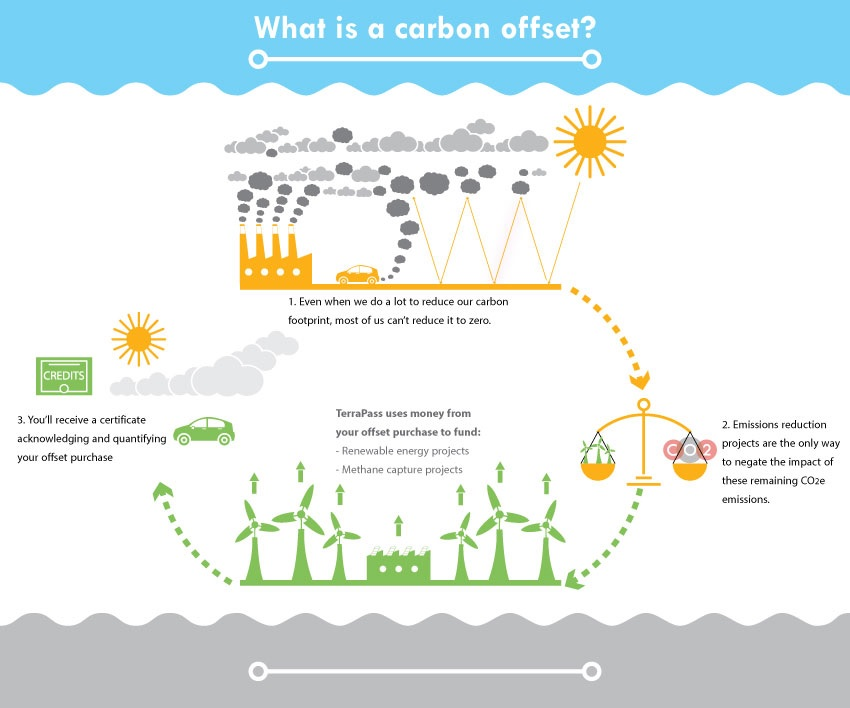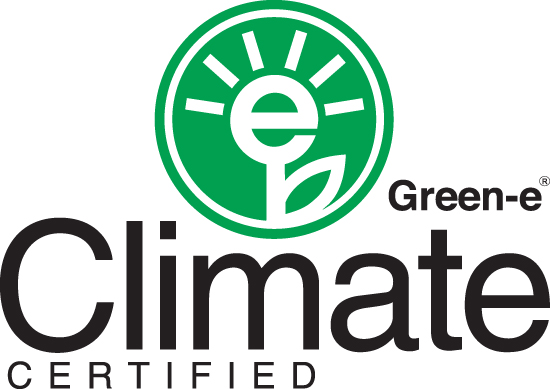What You Need to Know About Carbon Offsets

You often hear about carbon emissions; but what about carbon offsets? By definition, a carbon offset represents “…the reduction of one metric ton (2,205 lbs) of carbon dioxide emissions”; but on a broader level, carbon offsets can include any actions intended to compensate or “make up” for a certain amount of CO2 emissions. Carbon offsets are becoming an important tool in our arsenal, as greenhouse gas (GHG) emissions are the main cause of global warming. Whether the action is small-scale or far-reaching, making a direct impact is a lot easier than you might think.
A lesser-known method of mitigating one’s carbon footprint is by purchasing carbon offsets, which are now offered by a variety of companies and organizations. This is a great way to make an impact on an individual level. For example, the next time you travel by airplane (which creates sky-high levels of carbon emissions), you might consider purchasing some carbon offsets. It’s important to note that these “offsets” are not a tangible thing; essentially, your purchase is like a donation, with those funds being put into specific projects that have a common goal of reducing CO2 emissions. Professionals can propose projects — like this one in Colorado, which captures methane and prevents it from entering the atmosphere — and after a certification process, they can sell carbon offsets to help fund the projects and make them a reality. It’s kind of like a GoFundMe for the planet… Cool, right?

While carbon offsets are a great and seemingly simple way to make an impact, it’s important to talk about privilege when we discuss solutions like this. The way our current capitalist society functions is that (usually) the cheapest and most convenient options for obtaining resources have a negative impact on the planet. This means that for many people, the best or most affordable options for them are not the best options regarding the health of the planet. Because many of the more eco-friendly methods aren’t the “norm” in society today, they often cost more. Many people can’t afford to pay for an electric car, or buy exclusively slow fashion, or even have access to resources like organic produce from a local farm — and that should never be a reason for guilt or shame. However, carbon offsets are a great and accessible way to create change, even if you’re on a budget. It helps fund better practices, which can help them become more mainstream in the future; and incentivizes companies to spend more on sustainability in the long run.
Today, there are many places where you can purchase carbon offsets, all supporting different initiatives. Here are a few of the most popular reputable programs out there:
- NativeEnergy : NativeEnergy makes it easy for both individuals and corporations to combat climate change. They focus on promoting projects that focus on regenerative agriculture and biodiversity in ecosystems. As well as offering carbon offsets for purchase, NativeEnergy also has some great informational materials on their site, as well as a useful carbon calculator.
- TerraPass : Another user-friendly option for purchasing carbon offsets is TerraPass, which has options for individuals as well as multiple kinds of businesses (small, medium, large, etc.). TerraPass has loads of information on how to incorporate sustainability into your everyday lifestyle, and they help fund a wide range of different projects.
- Clear : Clear is one of the most highly-regarded and longest-running sellers of carbon offsets. Since 2005, they have supported many high quality projects, all certified by a variety of third-party organizations. Many consider Clear to be the gold standard for buying carbon offsets, since it’s the only site where you can be sure that all the offsets are certified by the Quality Assurance Standard for Carbon Offsetting. They also have an awesome “Offset Me” tab, which lets you calculate the amount of offsets for a ton of specific activities — including a hot air balloon ride, if that’s your thing.
- atmosfair : With travel finally making its big comeback after Covid, many people are choosing to offset the impact of their flights — and atmosfair is a great way to do this. Their website has a whole page of resources on “Green Travel”, and they currently fund projects in over 12 countries all around the globe.
- Shopify & Etsy : While neither of these are specifically carbon offset programs, they represent examples of big businesses making a positive shift. Shopify allows merchants to opt-in to offset the shipping for all of their deliveries, and they offset the delivery emissions from purchases made using Shop Pay. Etsy was the first major online shopping platform to offset 100% of carbon emissions from shipping & packaging. Both businesses are completely carbon-neutral, which is a big benefit when shopping online. Try to shop from carbon-neutral or carbon-negative businesses when you can!
When buying carbon offsets, look out for third-party certifications like Gold-Standard or Green-e on the organization’s website. Many of these sites have a variety of payment options, including monthly or annual subscriptions for purchasing carbon offsets. Not sure where to start? Check out this simple carbon calculator to determine the impact of a certain activity, or use this travel offset calculator to see the specific amount of offsets you could purchase to offset a certain trip. And remember, it’s not just you creating carbon emissions. We each have a carbon footprint, and corporations are actually causing way more emissions than many of us combined: In fact, the top 15 U.S. food and beverage companies alone emit more greenhouse gases than the entire country of Australia.

Corporations should be held responsible for their large impacts. Some are starting to take initiative through purchasing carbon offsets. According to Statista, Delta and Disney were among the biggest corporate purchasers of carbon offsets last year. However, many consumers worry that purchasing carbon offsets functions as a method of greenwashing for big brands, giving them an easy solution to their climate qualms while avoiding “real” action towards reducing their impacts. Considering this, it’s important to urge the brands you buy from to take action against climate change, in any and all forms — since corporations have more resources and more potential for a bigger impact. However, don’t underestimate your own individual impact in the process! There are countless other ways that you can help, and purchasing carbon offsets is a great way to be a part of the solution.


Leave a Reply